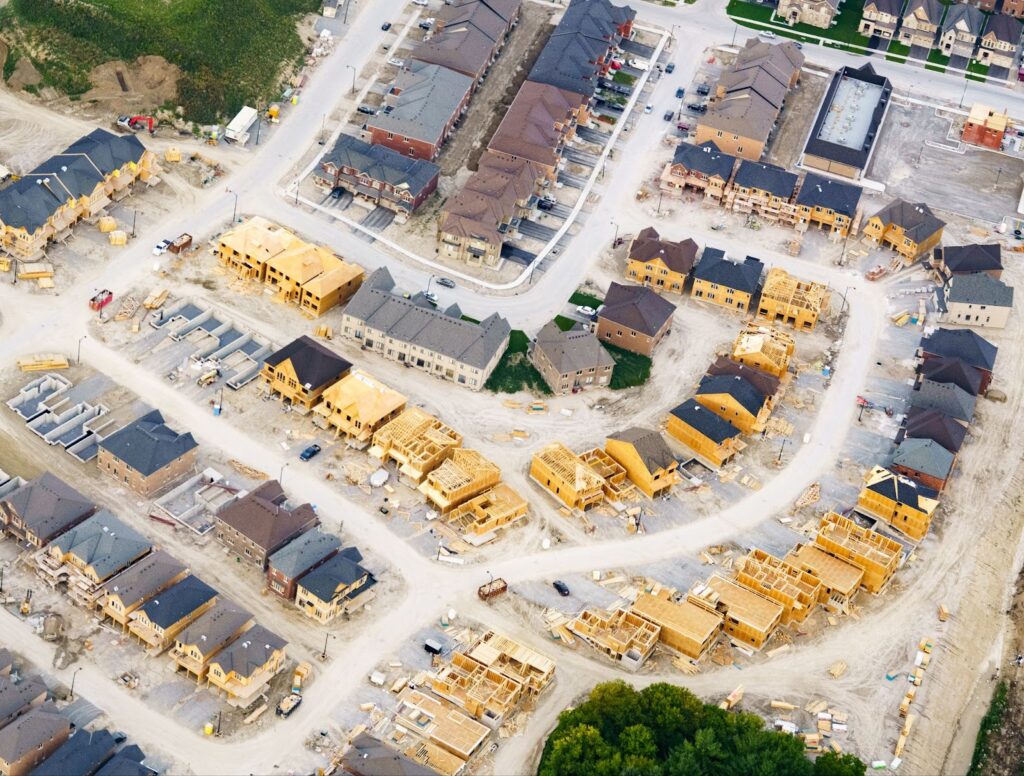Last Updated on October 24, 2023 by Corben Grant
It’s no secret that real estate prices have been up, but they aren’t the only price that’s been increasing. In fact, almost everything has been going up in price these days. One major component of real estate –construction – has been going up in price significantly as well.
Just how expensive has construction become? How have prices grown over the last few years? What are the forecasts for construction costs? Let’s take a look.
What is the construction price index?
Statistics Canada tracks the average costs of construction across the country through a measure they call the Building Construction Price Index. The construction price index tracks the construction prices that contractors charge in 11 metropolitan areas.
The index includes prices for residential construction costs such as for detached homes and apartments, as well as commercial, institutional, and industrial construction such as shopping centers, factories, and schools.
The index includes all prices involved with construction, including materials, labour, equipment, contractor profits and more. It does not include things like land costs, real estate costs, building design, and more. Data on the construction price index is compiled and released on a quarterly basis.
How to interpret the construction price index
There are some benefits and downsides to the construction price index. One benefit is that it provides info for a wide sample across the country allowing prices to be compared in different regions and across the country, and to be tracked over time.
One downside of the index is that the cost measured are added together, which makes it hard to compare the different component costs directly.
For example, you will not be able to use the index to determine the relative increases in building costs like materials and labour, only the overall project costs. You also can not really know the prices based on location with certainty in any areas beyond those sampled, so there could be potential outliers.
Overall, while the building construction price indexes should not necessarily be used to predict a project price or draw up a building quote, it’s useful to track national economic trends, though it should be used in accordance with other related indexes and statistics for best results.
Current trends in construction costs

The current residential average across all 11 metropolitan areas sampled in the construction price index is 137.6 as of Q3 2021. For comparison, in Q3 2020 the index was just 114.4, while in 2017 the index was at 100. That means that in about a year, more than it did in the previous three years.
Residential construction has seen rapid growth
Across Canada, the area of Ottawa-Gatineau displays the highest score on the index (153.1) and Moncton has the lowest (125.6).
In the last year, Calgary had by far the highest increase in the price index, gaining 34.4 points. Overall, non-residential construction has seen much slower growth in prices, growing only about 8 points since 2020 to reach 118.4 in Q3.
What affects the construction price index?
Based on the current index values, it’s clear that the cost of construction has gone up greatly in the last year. This is unsurprisingly largely an effect of the pandemic that also saw housing prices skyrocket. There are numerous things that have driven these prices up.
For one, the pandemic caused a lot of difficulty in transporting goods, at the same time that many people took on new home renovations. This led to material shortages and an increase in materials costs. There were also lots of people who got sick, laid off, or decided to change jobs, leading to labour shortages and higher costs in labour. The largest material contributors to price changes were and plastics, followed by concrete, steel and fixtures like windows and doors.
Finally, the general demand in the real estate market likely led to a lot of demand for new homes, requiring, or allowing, contractors to raise their prices.
The relationship between construction costs and the price of homes is not exactly clear. In some ways they are connected, as a significantly higher price on one side would drive demand to the other, and vice versa, leading to a gradual balancing of prices. It’s difficult to say exactly that one market directly drives prices in the other, especially as other external trends can play their own role in influencing prices.
Forecasts for the construction price index
Current forecasts for home prices indicate that they should continue to increase, though perhaps at a slower pace than seen recently for the next few years. Though supply chain issues related to the pandemic may clear up in the coming year, issues like the in the construction industry will be hard to address as quickly, meaning construction costs will likely stay elevated to some extent, and will probably grow proportionately to the resale market prices.
Corben joined CREW as a relative newcomer to the field of real estate and has since immersed himself and learned from the experts about everything there is to know on the topic. As a writer with CREW, Corben produces informative guides that answer the questions you need to know and reports on real estate and investment news developments across Canada. Corben lives in Guelph, Ontario with his partner and their two cats. Outside of work, he loves to cook, play music, and work on all kinds of creative projects. You can contact Corben at corben@crewmedia.ca or find him on Linkedin at https://www.linkedin.com/in/corbengrant/.









